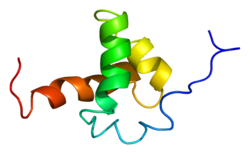The nuclear receptor co-repressor 2 ( NCOR2 ) is a transcriptional coregulatory protein that contains several nuclear receptor-interacting domains. In addition, NCOR2 appears to recruit histone deacetylases to DNA promoter regions. Hence NCOR2 assists nuclear receptors in the down regulation of target gene expression. [5] [6] NCOR2 is also referred to as a silencing mediator for retinoid or thyroid-hormone receptors (SMRT) [5] or T3 receptor-associating cofactor 1 (TRAC-1). [6]








